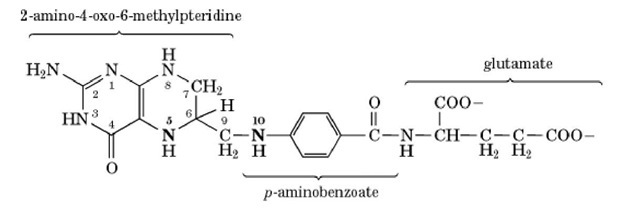全ての化学反応が可逆反応なのだとしたらなぜ不可逆反応とされる反応があるのか
「全ての化学反応は可逆反応である」という言い方を聞いたことがあります。その一方で、生化学の教科書を読んでいると「この反応は、不可逆反応である」という説明もよく目にします。いったい、どうなっているのでしょうか?
可逆反応とは,どちらの向きにも進む反応のことです。それに対して1つの向きだけに進む反応を不可逆反応といいます。また,平衡とは,物事が一方にかたよることなく、ある安定した状態を保つことですね。化学では,本当は反応が進んでいるのですが,見かけ上反応が止まっている状態を化学平衡とよんでいます。‥ 原理的には,反応物と生成物が存在するとき,すべての反応は可逆反応です。しかし,実際には,平衡状態で生成物の割合が著しく大きい反応系の場合,逆反応は非常に小さく,反応が不可逆的に一方向に進むと考えて差し支えがありません。(第111章 化学平衡 osaka-kyoiku.ac.jp/~hiroakio)
上の説明が一番わかりやすくて、混乱を解消してくれるものだと思いました。不可逆の意味は、「平衡状態で生成物の割合が著しく大きい」というわけですね。単純な話です。
水素H2と酸素O2から水H2Oが生成する反応を考えたときに、平衡状態(十分に長い時間がたったとき)の「生成物H2Oの量/反応物水素H2や酸素O2の量」という量比が著しく大きかったとしたら(たとえば水分子1億個:水素(または酸素)1個 など)、一度水分子になったものは1億分の1の確率でしか逆には戻れないということになりそうです。つまり不可逆なんですね。
結局、自分の疑問「可逆反応か不可逆反応かを決めるものは何か」の答えは、平衡定数(=生成物/反応物 という比)だったようです。
すべての化学反応は可逆反応であるともいえるが,化学平衡が著しく一方にかたよっている場合を不可逆反応,そうでない場合を可逆反応として取り扱うのが普通。(可逆反応【かぎゃくはんのう】 百科事典マイペディア コトバンク)
百科事典の説明も、そのまんまでわかりやすいです。
一般に、どんな反応でも十分時間がたてば化学平衡に達し、正反応の速度と逆反応の速度とが等しくなって、見かけ上、反応の進行は止まってしまう。厳密にいえば、すべての反応は可逆反応であり、片方向にしか進まない反応はないわけだが、この平衡が原系もしくは生成系のどちらかに極端にずれている場合は、見かけ上まったく反応が進まなかったり、あるいは全部反応して生成系のみになってしまう。これを不可逆反応という。(可逆反応【かぎゃくはんのう】 日本大百科全書(ニッポニカ) コトバンク)
日本大百科全書(ニッポニカ) の説明が、詳細で具体的でわかりやすいと思いました。同じことを説明した文章でも、自分が一番理解しやすい説明の仕方というものがあるように思います。
マクマリーの化学の教科書を見ていたら、Kが1000を超える場合は、事実上、不可逆反応であり、反応物が全部生成物になる。Kが10^-3よりも小さい場合は、事実上、反応は起きない。といった説明があり、具体的でわかりやすいものでした。
- マクマリー生物有機化学 基礎化学編 第4版(原書7版)211ページ
平衡定数は何できまるのか
平衡の偏り(反応物と生成物の比の偏り)で決まるということはわかりましたが、じゃあ、その平衡を決めるものは何なのでしょうか?化学平衡というものは、化学反応ごとに(および実験条件(温度など)ごとに)決まるようです。
平衡状態は確率論だけから予測することができる。‥ 平衡状態は “最確分布” そのものである。‥ 反応物と生成物のエネルギー準位を考慮すると、 反応物(A) ⇌ 生成物(B) の化学反応の平衡定数 𝐾=𝑛B 𝑛A は、 *反応物と生成物のそれぞれのエネルギー準位の間隔(∆𝐸A、∆𝐸B) *反応物と生成物の基底状態のエネルギー準位差(∆𝐸AB) によってきまる。(確率できまる化学的平衡状態 cc.iwate-u.ac.jp/~yoshii)
平衡定数は、生成物と反応物のエネルギーの差で決まるとのこと。そういえば物理の統計力学の授業でそんな話があったような気がします。自分の頭の中で結びついていないだけでした。
化学の教科書(マクマリー一般化学(下)第16章 熱力学 エントロピー、自由エネルギーおよび平衡)を見ていたら、書いてありました。
何が平衡定数の値を決めるのであろうか 疑問に答えるために、熱力学について学ぶ 本章の最初に掲げた”何が平衡定数の値を決めるのか”という問題に答えてみよう。その解は、”平衡定数の値を決めるのは、反応の標準自由エネルギー変化(ΔG゜)であり、それは反応物と生成物の標準生成熱と標準モルエントロピーに依存する”ということである。(マクマリー一般化学(下)第16章 384ページ、402ページ)
標準ギブス自由エネルギーから平衡定数を計算
ΔG=ΔG゜’ + RT ln [生成物]/[反応物]
の式で、平衡状態に達したときにはΔGがゼロなので、
ΔG゜’ =- RT ln [生成物]/[反応物]
であり、標準ギブス自由エネルギーΔG゜’がわかれば、平衡定数=生成物]/[反応物] は計算で求まります。五十嵐・志村『改訂 生化学』(光生館)の第8章「生体でのエネルギーの生成と利用」の表8-1には、平衡定数Keqと標準自由エネルギーの関係が表になっていました。R=1.987, T=298(室温25度として)で計算されたものですが、ΔG゜’ =-4.09であれば、Keq=10^3になります。標準自由エネルギーの差が-3である反応は、平衡状態において生成物の方が反応物よりも1000倍多いというわけです。ATPの加水分解の標準自由エネルギー変化は―7.3k cal/molなので、同様に計算すると、平衡時のADP/ATPは10^5になるので、(合計のΔGが負になるように他の反応と共役しないかぎり)不可逆反応だというのも納得です。
生化学の教科書はあまり物理化学的な内容の詳細には踏み込まないものが多いですが、五十嵐・志村『改訂 生化学』はツボを押さえた説明だなあと思いました。他の箇所の説明も、知識の羅列にせずにストーリーを語る意識が強いように感じられるいい本だと思います。図書館で借りた本だとメモを書き込めないので、買うことにしました。
- A Primer On Organic Reactions By James Ashenhurst Equilibrium and Energy Relationships ギブスエネルギーΔGと平衡定数との関係を例を挙げて示していてわかりやすい。
反応が進む理由
平衡状態のときの話はそれとして、平衡ではないときは、
ΔG=ΔG゜’ + RT ln [生成物]/[反応物]
の式に従ってΔGが負であれば反応が進むわけです。対数の中身をみると分子の生成物がすぐに次の反応に使われて量が低く抑えられれば、第2項の値は小さくなるのでΔGが負のままでいられます。
it is almost never necessary to explicitly evaluate ΔG. As we will show in the lesson that follows this one, it is far more convenient to work with the equilibrium constant of a reaction, within which ΔG is “hidden“.
15.4: Free Energy and the Gibbs Function LibreText Chemistry
不可逆性の巷の説明
なぜその化学反応が不可逆なのかをきちんと説明したものが案外少ないように思います。両方向の矢印を引いて、この反応は可逆、一方方向の矢印を描いて、これは不可逆としても全く解説にはなっていませんし。
-
What makes a chemical reaction reversible or irreversible? https://www.quora.com/What-makes-a-chemical-reaction-reversible-or-irreversible/answer/Aravind-Baby-6 All reactions are reversible in some respect, it is the rate constant of the reaction that determines whether it can be considered irreversible. if A+B —→ C+D is reaction for which forward rate constant is k1 and backward reaction rate constant is k2, then if k1/k2> 10^5, we can say reaction is practically irreversible, and that C and D would be the only components present in system when reaction is completed. Values of k1 and k2 depend upon the activation energy of reaction.
- 不可逆反応 ウィキペディア
- メタンを完全燃焼させると水と二酸化炭素になりますが、なぜこれは可逆反応をしないのですか? YAHOO!JAPAN知恵袋

 (ChemSketchで描画)
(ChemSketchで描画)